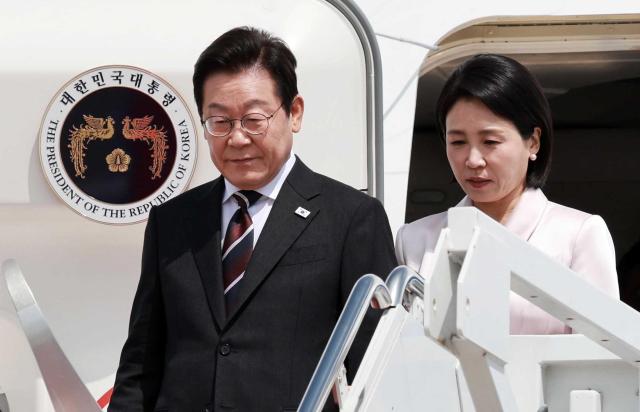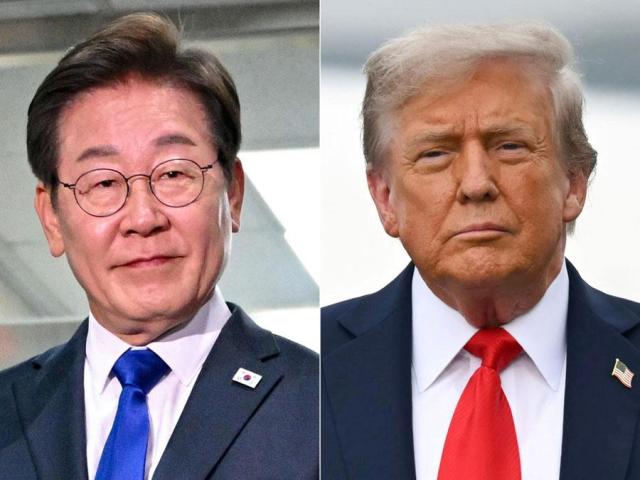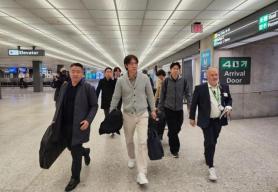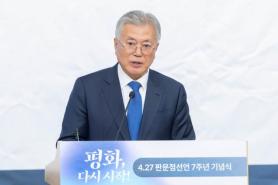
After wrapping up his visit to Tokyo last Sunday, where he met with Japanese Prime Minister Shigeru Ishiba to further bolster shuttle diplomacy between the two neighbors, Lee headed straight to Washington for his first meeting with the leader of South Korea's closest ally, which comes a bit later than his predecessors.
Although Lee briefly attended a multilateral gathering in Canada shortly after his inauguration on June 4, his summit with Trump technically marks his official debut on the international diplomatic scene.
All eyes are on the summit, whose outcome is likely to reshape South Korea's partnership with the U.S. on regional security and economic cooperation.
But major challenges await him, with the summit holding particular importance as it takes place amid escalating global trade wars and rising protectionism fueled by Trump's sweeping tariff policies under his "America First" mantra.

But in an indication of difficulties ahead, Trump hinted that further adjustments could follow, saying the deal's "sum will be announced" when Lee visits the White House, despite calling it a "full and complete" agreement.
At the time, trade negotiators from both countries, for some reason, left out security and defense matters during their negotiations, unlike initial expectations of a broader package deal covering all issues under Trump's "one-stop shopping strategy." That would now require Lee and Trump to finalize additional details of the deal at the summit, while also discussing a wide range of issues from bilateral cooperation and defense cost-sharing to joint efforts for peace and security on the Korean Peninsula in response to North Korea's growing nuclear arsenal and other regional conflicts.
At the center of the discussions would be Trump's push for South Korea to pay more for the upkeep of some 28,500 U.S. troops stationed here, even though the two sides had already reached an agreement under the previous administrations with Seoul shouldering US$1.03 billion annually. The agreement is scheduled to take effect next year and remain in place until 2030, with annual adjustments based on consumer price inflation.
But Trump has repeatedly raised the issue, claiming that South Korea is paying "very little" for the upkeep and arguing that Seoul should contribute more for its own defense. Furthermore, Washington continues to signal that its allies should play a stronger role in regional security and take greater responsibility for collective defense.
Revealing a "leaked" draft of negotiations for the trade deal, the U.S. daily Washington Post recently reported that Washington "wanted Seoul to boost defense spending to 3.8 percent of GDP, up from 2.6 percent last year, and to increase its $1 billion-plus contribution to cover the annual costs of basing the roughly 28,500 U.S. troops in South Korea."
In this sense, Trump is likely to push Seoul for a steep increase in the upkeep of U.S. Forces Korea (USFK) and other contributions, while also urging it to embrace more "flexibility" in the USFK's evolving posture toward broader regional security in the Indo-Pacific, which is believed to be intended to keep China's growing influence in check.
During a press conference at Camp Humphreys in Pyeongtaek, Gyeonggi Province earlier this month, the USFK Commander Gen. Xavier Brunson said that what matters is enhancing capabilities rather than adjusting troop levels, explaining the U.S.' "strategic flexibility" as the "ability to place your forces in space and time as needed." He added, "One of the things I think about is not about numbers at all. I think about capabilities," emphasizing the need for "changes within USFK."
Brunson's remarks may raise discussions about possible changes in the role of the USFK as one of the key topics on the summit's agenda within the broader framework of "modernizing" the bilateral alliance, as Washington seeks to expand the scope of U.S. troops' presence here beyond defending against North Korean threats.
With many pressing issues on the table, the success of Lee's first major diplomatic outing to the U.S. would depend on how he effectively fends off any additional demands from an erratic hard-bargainer like Trump, who has a reputation for his dealmaking skills, and whether they can reach agreements that are mutually beneficial, instead of one-sided concessions. The true test is whether Lee can live up to his commitment to prioritize national interests, as he has preached through his so-called "pragmatic diplomacy."
After concluding the summit with Trump, Lee will travel to Pennsylvania the following day to tour a shipyard in Philadelphia operated by South Korean conglomerate Hanwha, which it acquired last year for $100 million, accompanied by an entourage of business leaders and other officials.
Including such an itinerary appears to be related to the trade deal, which negotiators say was concluded largely due to Seoul's proposal dubbed "MASGA" (Make America Shipbuilding Great Again). That includes a pledge to invest $150 billion to revitalize the American shipbuilding industry over the coming years, as part of a massive $350 billion investment in the U.S., along with the purchase of $100 billion worth of liquefied natural gas and other energy products.
Lee returns home on Thursday.
Copyright ⓒ Aju Press All rights reserved.




